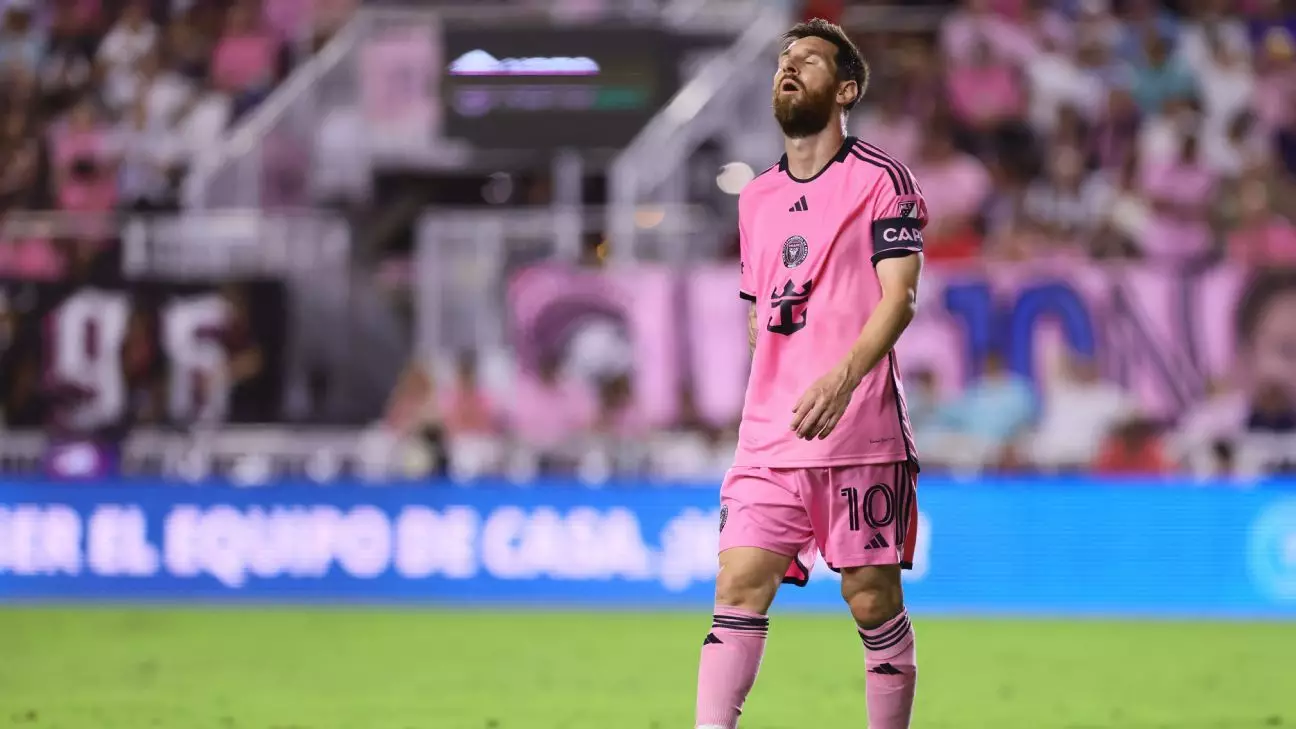The 2024 MLS season for Inter Miami came to a shocking and untimely end that left over 20,000 fans in disbelief. The highly anticipated squad, featuring global icons like Lionel Messi and Luis Suárez, suffered an early playoff exit at the hands of Atlanta United, a team that had finished in ninth position during the regular season—34 points behind Miami. This outcome raises many questions about how a team so richly talented could falter when it mattered most.
One of the keys to understanding Miami’s quick playoff exit lies in the series of challenges the team faced well before the postseason began. The preseason tour, though globally beneficial, became a double-edged sword. Players traveled over 28,000 miles while competing on questionable pitches across three continents. Messi himself acknowledged the ineffective nature of the preseason, expressing that it didn’t adequately prepare the team, highlighted by a devastating ACL injury to midfielder Facundo Farías before the regular season even started.
Problems continued to mount as the season progressed. By late March, injuries had already hindered the team’s performance, with Miami holding the unfortunate title of most players listed as unavailable in MLS. The squad struggled under the tremendous weight of recurring injuries that impacted key players like Messi, Farías, and the promising Benjamin Cremaschi. A staggering 184 matches’ worth of absences drained the available talent pool, a factor that would ultimately cripple Miami’s bid for glory.
As injuries piled up, the tactical flexibility of manager Gerardo Martino was put to the test. The urgency to find quick fixes led to hasty roster decisions, leading to players being thrust into roles they weren’t accustomed to filling. This lack of a consistent lineup contributed to a litany of defensive errors and glaring inconsistencies, which cost the team vital points throughout the season.
Martino’s team relied heavily on the superstars Messi and Suárez to compensate for the growing list of absentees, but as the playoffs approached, it became evident that a two-man show was inadequate. In the decisive Game 3 against Atlanta, the decision to play Matías Rojas in a central role—due to injuries to veterans like Sergio Busquets—ultimately proved disastrous when the game plan fell apart, underscoring the mistakes made by the coaching staff under pressure.
The playoffs, unlike the regular season, allowed no room for error. Martino noted that “playing a 34-game tournament allows you things that 90 minutes do not,” highlighting the amplified stakes that the playoffs present. Mistakes, he argued, are magnified in such high-stakes matches, and Miami proved unable to navigate this pressure.
A deeper look into Miami’s deficiencies reveals alarming stats that paint a grim picture. The Herons managed just six clean sheets in 34 games and conceded 49 goals, a particularly concerning figure for a team that captured the Supporters’ Shield. The vulnerability of the backline was often masked by the brilliance of their attacking stars, but it could not continue to escape scrutiny.
The reliance on Messi and Suárez was inarguable. The duo accounted for nearly 27% of the team’s decisive goals, but when they faltered—especially amid their absences—Miami’s underlying fragility became startlingly apparent. This lack of depth led to staggering losses, including a humiliating 4-0 defeat to New York Red Bulls. When the stars couldn’t shine, the rest of the team struggled to rise to the occasion.
As the dust settles from this challenging season, several lessons emerge. The need for adequate roster depth and a more strategic approach to preseason preparations cannot be overstated. The 2025 season beckons, promising multiple tournaments, including the MLS, Concacaf Champions Cup, and Club World Cup. Miami’s front office will need to prioritize not only maintaining marquee players but also acquiring reliable substitutes who can step up when the team’s stars are sidelined.
Moving forward, the team’s leadership, including sporting director Chris Henderson and coach Martino, must conduct a thorough evaluation of the squad. With 16 players facing contract expiration and a clutch of positions in dire need of reinforcement—especially the backline—swift action will be paramount. The club should focus on bringing in experienced players who can provide stability both defensively and across the pitch.
The 2024 season was a harsh reality check for Inter Miami. However, with measured adjustments and a commitment to enhancing depth, the potential for success remains vast. As fans look towards the future, the hope for another trophy lift is not misplaced—it merely requires the right foundations to make it a reality. With brighter days on the horizon, Miami can aspire to reclaim its status as a formidable force in MLS and beyond.

